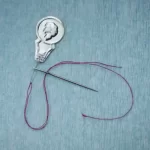Streamers and Gamers Are Noticing They Have Dents in Their Heads Due to Prolonged Headphone Use
The post Streamers and Gamers Are Noticing They Have Dents in Their Heads Due to Prolonged Headphone Use appeared first on Healthy Holistic Living.
In the ever-evolving landscape of gaming and streaming, enthusiasts find themselves immersed in extended sessions, often accompanied by the faithful companion of headphones. Recently, a peculiar observation has emerged within these communities—individuals are noticing indentations forming on their heads, attributed to prolonged headphone use. This phenomenon has sparked discussions regarding its legitimacy, implications, and potential remedies.
Understanding the Curious Case of Headphone Indentations
For many dedicated gamers and streamers, donning headphones for extended periods is par for the course. The allure of immersive gaming experiences or the need for clear audio communication during live streaming sessions often necessitates hours spent with headphones firmly in place. However, amid these prolonged sessions, an unexpected phenomenon has begun to emerge—an increasing number of individuals are noticing subtle dents forming atop their heads, particularly in the region where the headband of the headphones rests.
This revelation has sparked both curiosity and concern within gaming and streaming communities, prompting individuals to scrutinize their own cranial contours and share their findings on social media platforms. As anecdotes and revelations abound, a shared narrative has emerged, highlighting the prevalence of this curious occurrence among enthusiasts who spend significant time wearing headphones.
Anecdotes and Revelations: Social Media’s Role in Awareness
One such instance gained widespread attention when a prominent gamer documented his experience on Twitter while shaving his head for a charitable cause. In a moment of candid disclosure, he expressed astonishment upon discovering a noticeable indentation previously concealed by his hair. His tweet served as a catalyst for discussions among peers and followers, igniting a conversation about the potential implications of prolonged headphone usage on head shape.
In addition to individual anecdotes, social media platforms have become vibrant hubs for individuals to share their own experiences and observations regarding headphone indentations. Posts and videos showcasing individuals revealing their unexpected imprints have garnered significant engagement, eliciting a spectrum of reactions ranging from amusement to genuine concern. This collective sharing of experiences has not only fueled curiosity but also fostered a sense of community as individuals navigate this uncharted territory together.
The Quest for Understanding: Balancing Anecdotal Evidence with Scientific Inquiry
As individuals grapple with the implications of headphone indentations, the need for further exploration and understanding becomes increasingly apparent. While anecdotal evidence offers valuable insights into the prevalence and personal experiences of this phenomenon, scientific inquiry provides a foundation for comprehensively understanding its underlying causes and potential impact on long-term health and well-being.
Research into the biomechanics of cranial structures and the effects of prolonged pressure from headphone headbands may shed light on the mechanisms contributing to indentations. Additionally, longitudinal studies examining the prevalence of headphone-induced head shape alterations among gaming and streaming enthusiasts could provide valuable epidemiological insights.
Exploring the Phenomenon: Fact or Fiction?
Amidst the proliferation of viral videos and spirited social media commentary surrounding headphone indentations, a critical inquiry emerges—what is the veracity of this phenomenon? Are these indentations a genuine cause for concern or merely a passing curiosity? While anecdotal evidence may suggest a correlation between prolonged headphone use and head shape alterations, scientific research offers valuable insights into the matter, providing a foundation for informed discourse.
In the digital age, anecdotes and personal experiences often permeate online discourse, shaping collective perceptions and fueling speculation. The emergence of viral videos and social media posts showcasing individuals revealing their unexpected head indentations has captured the attention of enthusiasts worldwide. However, amidst the fervor of online chatter, it is essential to temper anecdotal observations with empirical evidence derived from rigorous scientific inquiry.
Dissecting Scientific Findings: The Resilience of the Human Skull
Contrary to widespread apprehension, scientific studies indicate that the human skull exhibits remarkable resilience, necessitating significant force to undergo structural changes. Research published in reputable journals, such as the National Library of Medicine, provides compelling evidence supporting the skull’s robustness in the face of external pressure, even when subjected to the weight of bulky headphones.
The findings of these studies challenge prevailing notions and dispel misconceptions surrounding the potential for headphones to cause permanent alterations to head shape. Instead, they reaffirm the structural integrity of the human skull, reassuring individuals concerned about the long-term effects of prolonged headphone usage.
Weighing Evidence: Towards Informed Discourse
As enthusiasts grapple with the implications of headphone indentations, it is imperative to navigate the intersection of anecdotal accounts and empirical research with nuance and discernment. While anecdotal evidence may offer valuable insights into individual experiences, it is essential to complement these observations with scientific findings to arrive at a comprehensive understanding of the phenomenon.
By critically evaluating the available evidence and engaging in informed discourse, enthusiasts can dispel myths, challenge misconceptions, and foster a culture of evidence-based dialogue within gaming and streaming communities. Through collaborative efforts and a commitment to intellectual rigor, individuals can navigate the complexities of emerging phenomena with clarity and confidence.
Addressing Health Concerns From Prolonged Headphone Use: Beyond Head Indentations
While the physical manifestation of headphone use on head shape may be negligible, attention must be directed towards potential health implications associated with prolonged usage. Enthusiasts often prioritize immersive gaming and streaming experiences, sometimes at the expense of auditory well-being. However, it is crucial to recognize and mitigate the risks posed by excessive headphone usage to safeguard long-term health. In this light, experts have identified several key health concerns associated with prolonged headphone use:
Irreversible Hearing Damage: Excessive exposure to high volume levels poses a significant risk of irreversible hearing damage. Audiologists caution against prolonged listening sessions at elevated volume levels, which can lead to permanent auditory impairment. Adhering to recommended guidelines—limiting headphone use to 90 minutes daily at 80% volume—can mitigate the risk of hearing loss and preserve auditory health over time.
Noise-Induced Hearing Loss: A study conducted by the National Acoustic Laboratories underscores the importance of sound volume moderation in protecting auditory well-being. Exposure to noise levels exceeding 85 decibels, equivalent to standing next to a running lawn mower, poses a significant risk of noise-induced hearing loss. Prolonged exposure to loud environments, such as intense gaming sessions or crowded streaming events, can exacerbate this risk and lead to long-term auditory complications.
Tinnitus and Auditory Fatigue: In addition to irreversible hearing damage, prolonged headphone use can contribute to the development of tinnitus—a persistent ringing or buzzing sensation in the ears—and auditory fatigue. These symptoms can diminish the quality of life and interfere with daily activities, highlighting the importance of proactive measures in safeguarding auditory well-being.
Promoting Auditory Health: A Call to Action
As gaming and streaming enthusiasts continue to immerse themselves in their favorite pastimes, it is essential to prioritize auditory health and well-being. By adhering to recommended guidelines, such as limiting headphone use to moderate volume levels and taking regular breaks to alleviate auditory fatigue, individuals can mitigate the risk of irreversible hearing damage and preserve their long-term auditory health.
Furthermore, raising awareness about the importance of responsible headphone usage and sound volume moderation is paramount. Educating enthusiasts about the risks associated with excessive headphone usage and empowering them to make informed decisions regarding their auditory health can help foster a culture of proactive self-care within gaming and streaming communities.
Practical Recommendations for Auditory Health
In light of the health concerns associated with prolonged headphone usage, it is imperative to adopt proactive measures to safeguard auditory well-being. By integrating practical recommendations into their routines, enthusiasts can strike a balance between enjoyment and auditory health. Here are some actionable steps individuals can take:
Limit Usage: Adhere to recommended guidelines by limiting headphone use to 90 minutes daily at a moderate volume level. Setting time limits ensures that prolonged exposure to potentially damaging sound levels is minimized, reducing the risk of auditory fatigue and long-term hearing impairment.
Monitor Volume Levels: Maintain awareness of sound volume levels and avoid prolonged exposure to excessively loud environments. Utilizing volume-limiting features on devices or employing smartphone applications to measure sound levels can help individuals regulate their listening habits and prevent overexposure to high decibel levels.
Invest in Quality Equipment: Consider investing in high-quality headphones equipped with noise-canceling features to minimize the need for elevated volume levels. Noise-canceling headphones can effectively reduce ambient noise, allowing users to enjoy clearer audio at lower volume settings, thus reducing the risk of auditory damage.
Take Breaks: Incorporate regular breaks during extended gaming or streaming sessions to alleviate auditory fatigue and reduce the risk of overexposure. Engaging in brief intervals of rest allows the auditory system to recover from prolonged stimulation, promoting overall auditory health and well-being.
Exploring the Psychological Impact
Beyond the physical ramifications, prolonged headphone usage extends its influence into the realm of psychological well-being, impacting individuals within gaming and streaming communities on a deeper level. As enthusiasts immerse themselves in virtual realms for extended periods, the delineation between the digital and physical worlds often blurs, fostering a sense of detachment from reality. This blurring of boundaries can lead to a myriad of potential psychological consequences, shedding light on the intricate interplay between technology and mental health.
Blurring of Digital and Physical Realms: Prolonged headphone usage may blur the boundary between virtual and physical worlds, potentially leading to feelings of disconnection and disorientation. The immersive nature of gaming and streaming experiences, coupled with extended periods of headphone use, can create a sense of detachment from the immediate surroundings, fostering a reliance on virtual interactions over real-life connections.
Excessive Screen Time: Research suggests that extended gaming sessions often involve excessive screen time, which can have detrimental effects on mental well-being. Prolonged exposure to digital screens has been linked to increased feelings of loneliness, social detachment, and even depression. As individuals spend hours engrossed in virtual environments, the lack of face-to-face interaction and physical activity can exacerbate feelings of isolation and contribute to negative mood states.
Risk of Depression: Individuals immersed in virtual environments for prolonged periods may be at increased risk of developing depression due to reduced social interaction and isolation. The allure of immersive gaming experiences may provide temporary escapism from real-life stressors, but prolonged exposure to virtual worlds can lead to a deep sense of emptiness and dissatisfaction. Without adequate social support and meaningful connections, enthusiasts may find themselves trapped in a cycle of negative emotions and psychological distress.
As gaming and streaming communities continue to evolve, it is essential to recognize the psychological impact of prolonged headphone usage and prioritize mental well-being alongside physical health. By fostering open dialogue, promoting social connectivity, and encouraging mindfulness in technology usage, enthusiasts can navigate the complexities of immersive experiences with resilience and self-awareness.
Exploring Remedial Measures
As individuals grapple with the implications of headphone indentations, the quest for remedial measures becomes paramount, extending beyond mere aesthetic concerns to encompass broader considerations of comfort and well-being. While the structural integrity of the human skull may remain uncompromised, the visibility of indentations can evoke feelings of self-consciousness and prompt individuals to seek practical solutions. From ergonomic headphone designs to innovative hair styling techniques, a range of remedial measures exists to address both the physical discomfort and psychological impact associated with headphone indentations.
Ergonomic Headphone Designs: Enthusiasts may explore ergonomic headphone designs that distribute pressure more evenly to reduce the likelihood of indentations forming on the skull. By investing in headphones with adjustable headbands, cushioned ear cups, and lightweight materials, individuals can prioritize comfort without sacrificing audio quality or immersive experience.
Hair Styling Techniques: Innovative hair styling techniques can be employed to conceal or minimize the appearance of indentations, offering a cosmetic solution to perceived imperfections. From strategic hair parting to volumizing products, enthusiasts can experiment with various styling methods to enhance their appearance and boost confidence while wearing headphones.
Customized Headphone Accessories: For individuals seeking personalized solutions, customized accessories such as padded headband covers or adjustable headband extenders can provide additional comfort and alleviate pressure on specific areas of the skull. By tailoring headphone accessories to individual needs and preferences, enthusiasts can optimize comfort and minimize discomfort during extended usage.
In navigating the complexities of headphone indentations, it is essential to adopt a holistic approach that addresses both physical and psychological well-being. By exploring remedial measures and embracing innovative solutions, individuals can enhance their comfort, confidence, and overall satisfaction with headphone usage, fostering a positive and sustainable relationship with technology.
Striking a Balance
While the notion of headphone-induced head indentations may spark curiosity and amusement, scientific evidence suggests that such concerns about prolonged headphone use are largely unfounded. However, the importance of prioritizing auditory health and practicing responsible headphone usage cannot be overstated. By adopting mindful practices and adhering to recommended guidelines, enthusiasts can continue to enjoy immersive experiences while safeguarding their long-term well-being.
The post Streamers and Gamers Are Noticing They Have Dents in Their Heads Due to Prolonged Headphone Use appeared first on Healthy Holistic Living.












